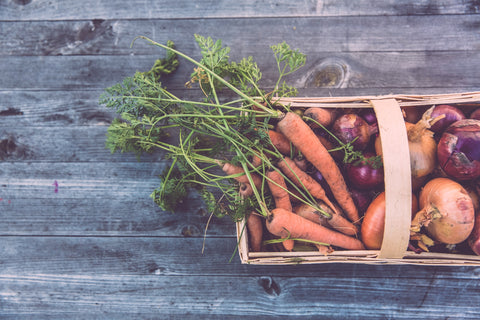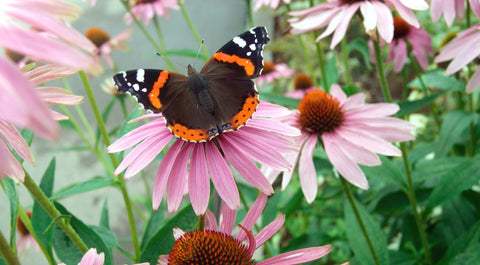Birds have a unique and enchanting way of bringing life to your garden. Their melodious songs, vibrant plumage, and graceful flights can transform your outdoor space into a lively and enjoyable haven. By creating a bird-friendly habitat, you not only provide a welcoming environment for these feathered friends but also contribute to the overall health and biodiversity of your garden. In this comprehensive guide, we will explore the steps and strategies for attracting birds to your garden and establishing a bird-friendly habitat that will delight both you and your avian visitors.The following content also has some reference value for raised garden beds.
The Importance of a Bird-Friendly Garden
Before we delve into the specifics of creating a bird-friendly habitat, let's understand why it's essential to invite birds into your garden:
Natural Pest Control
Birds are nature's pest controllers. Many species feed on insects, slugs, snails, and other garden pests. By attracting birds to your garden, you can reduce the need for chemical pesticides and promote a healthier, more balanced ecosystem.
Pollination
Certain birds, such as hummingbirds and honeyeaters, are important pollinators for various flowers and plants. Their visits help ensure the reproduction of many garden species.
Aesthetic Beauty
The presence of birds enhances the beauty and vibrancy of your garden. Their colorful plumage and graceful movements create a visually appealing and dynamic atmosphere.
Educational Opportunity
Observing and learning about birds in your garden can be a fascinating and educational experience, both for adults and children. It fosters an appreciation for wildlife and the natural world.
Stress Reduction
The sights and sounds of birds can have a calming and therapeutic effect. Birdwatching can be a relaxing and enjoyable pastime, promoting mental well-being.

Creating a Bird-Friendly Habitat
To attract birds to your garden, you need to address their basic needs: food, water, shelter, and safety. Here's how you can create a welcoming bird-friendly habitat:
Choose Native Plants
Native plants are the foundation of a bird-friendly garden. They provide birds with natural sources of food in the form of seeds, berries, nectar, and insects. Native plants are adapted to your local ecosystem, making them easier to maintain and more attractive to local bird species.
Consider planting species like:
- Sunflowers: Attract a variety of seed-eating birds.
- Coneflowers: Provide nectar for hummingbirds and seeds for finches.
- Native grasses: Offer seeds and shelter for ground-feeding birds.
- Berry-producing shrubs: Shrubs like serviceberry, elderberry, and holly produce berries that birds love.
Provide a Water Source
Birds need fresh water for drinking and bathing. A bird bath or a small pond can serve as a water source. Ensure the water is clean and regularly replenished. Adding a water feature with moving water, like a fountain, can be particularly attractive to birds.
Offer Varied Food Sources
Diversify the types of food you offer to attract a wider range of bird species. Consider these options:
- Seed Feeders: Install bird feeders stocked with various seeds like sunflower, safflower, and nyjer. Different bird species have different seed preferences.
- Suet Feeders: Suet cakes or blocks provide high-energy food for woodpeckers, chickadees, and nuthatches.
- Nectar Feeders: Hang hummingbird feeders with sugar water for these tiny, iridescent visitors.
- Fruit Trees and Shrubs: Plant fruit-bearing trees and shrubs that provide natural food sources for birds.
Create Shelter and Nesting Sites
Birds need safe places to rest, roost, and nest. Provide a variety of shelters, such as:
- Birdhouses: Install birdhouses designed for specific species. Different birds have different preferences for hole size and location.
- Shrubs and Trees: Plant dense shrubs and trees to offer birds places to perch and hide.
- Brush Piles: Create brush piles with fallen branches and twigs to provide shelter for ground-feeding birds like sparrows and towhees.
Minimize Chemical Use
Reduce or eliminate the use of pesticides and herbicides in your garden. Chemicals can harm birds directly or indirectly by reducing their insect food sources. Opt for natural pest control methods like planting beneficial insect-attracting flowers or using biological pest controls.
Keep Cats Indoors
Cats are a major threat to birds. If you have cats, keep them indoors to protect both your feathered visitors and your pets. If you must let your cats outside, use a leash or provide them with an enclosed outdoor space.
Avoid Overfeeding
While it's important to provide food for birds, it's equally important not to overfeed. Overfeeding can attract unwanted pests and contribute to the spread of disease among birds. Clean your bird feeders regularly to prevent mold and bacteria buildup.
Seasonal Maintenance
Maintain your bird-friendly garden throughout the year. Keep bird feeders stocked, ensure water sources are ice-free, and continue providing shelter and nesting opportunities.

Attracting Specific Bird Species
Different bird species have varying preferences for food, water, and shelter. By tailoring your garden to the specific needs of certain birds, you can attract a diverse range of avian visitors. Here are some examples:
Hummingbirds
To attract hummingbirds, provide nectar-rich flowers, as well as hummingbird feeders filled with sugar water. Plant tubular flowers like trumpet vine, salvia, and bee balm, which are their favorites. Hang feeders in a sunny, visible location.
Songbirds
Songbirds, like finches, sparrows, and chickadees, are often attracted to seed feeders and native plants that produce seeds. Offering a variety of seed types will cater to different species' preferences.
Woodpeckers
Woodpeckers are attracted to suet feeders and will also appreciate trees with bark insects they can forage for. Consider hanging suet feeders near trees and providing snags (dead trees) for them to perch on.
Orioles
Orioles are fond of nectar, fruit, and jelly. Offer orioles slices of oranges, grape jelly, and sugar water in specialized oriole feeders. They also appreciate fruit-bearing trees and shrubs.
Bird-Friendly Garden Design Ideas
Incorporating bird-friendly design elements into your garden can enhance its appeal and functionality. Here are some ideas to consider:
Plant in Layers
Create vertical diversity by planting at different heights, from groundcovers to tall trees. This provides birds with various perching and nesting options.
Install Bird-Attracting Trees
Select trees that produce nuts or berries, such as oak, hickory, or serviceberry. These trees provide food and shelter for birds.
Create a Rock Garden
A rock garden with crevices can offer nesting sites for ground-nesting birds like sparrows and towhees.
Design Natural Borders
Instead of formal hedges, consider using native shrubs and bushes to create natural borders around your garden. These plants provide food and shelter.
Provide Year-Round Interest
Choose plants that offer something for birds throughout the seasons, from flowers and berries in the fall to seed heads in the winter.
Include Bird-Friendly Groundcovers
Low-growing plants like clover and creeping thyme can attract ground-feeding birds and provide cover.
Incorporate a Birdbath
A birdbath can serve as both a water source and a decorative element in your garden. Place it near plants where birds can easily perch and bathe.

Birdwatching and Enjoyment
Creating a bird-friendly garden isn't just about attracting birds; it's also about the joy of birdwatching and connecting with nature. Here are some tips to enhance your birdwatching experience:
Invest in Binoculars
A good pair of binoculars can help you observe birds more closely, even from a distance. Look for binoculars with clear optics and a comfortable grip.
Keep a Field Guide
A field guide to birds can help you identify different species and learn about their habits and behaviors. Look for guides that are specific to your region.
Set Up a Viewing Area
Create a designated spot in your garden for birdwatching. Install a comfortable chair or bench where you can sit quietly and watch the birds without disturbing them.
Record Your Observations
Consider keeping a birdwatching journal to record the species you've seen, their behaviors, and any interesting observations. This can be a rewarding way to track your garden's bird visitors over time.
Bird-Friendly and Eco-Friendly
Creating a bird-friendly garden not only benefits the birds but also contributes to a more eco-friendly and sustainable outdoor space. By planting native plants, avoiding harmful chemicals, and providing essential resources for birds, you're fostering a healthier ecosystem in your own backyard. Birds in your garden will not only delight you with their presence but also play a vital role in maintaining the balance of nature. So, start planning and implementing these bird-friendly strategies, and you'll soon enjoy the sights and sounds of a thriving avian community in your garden. Happy birdwatching!









